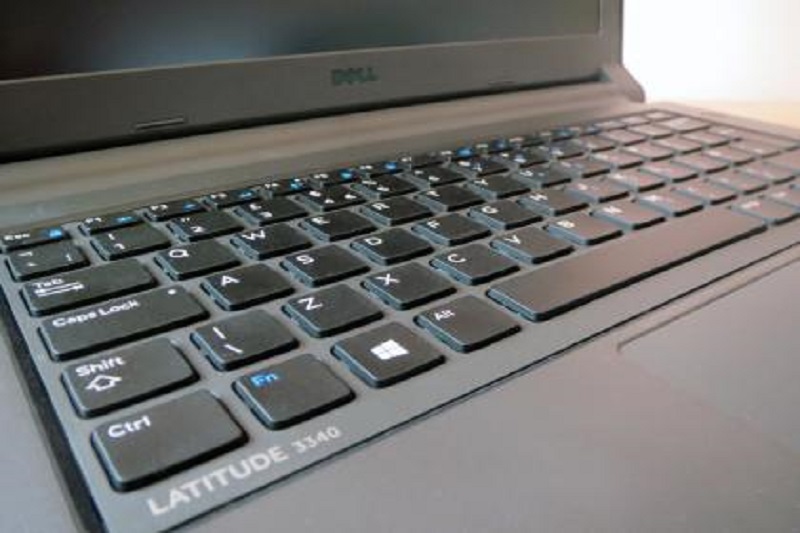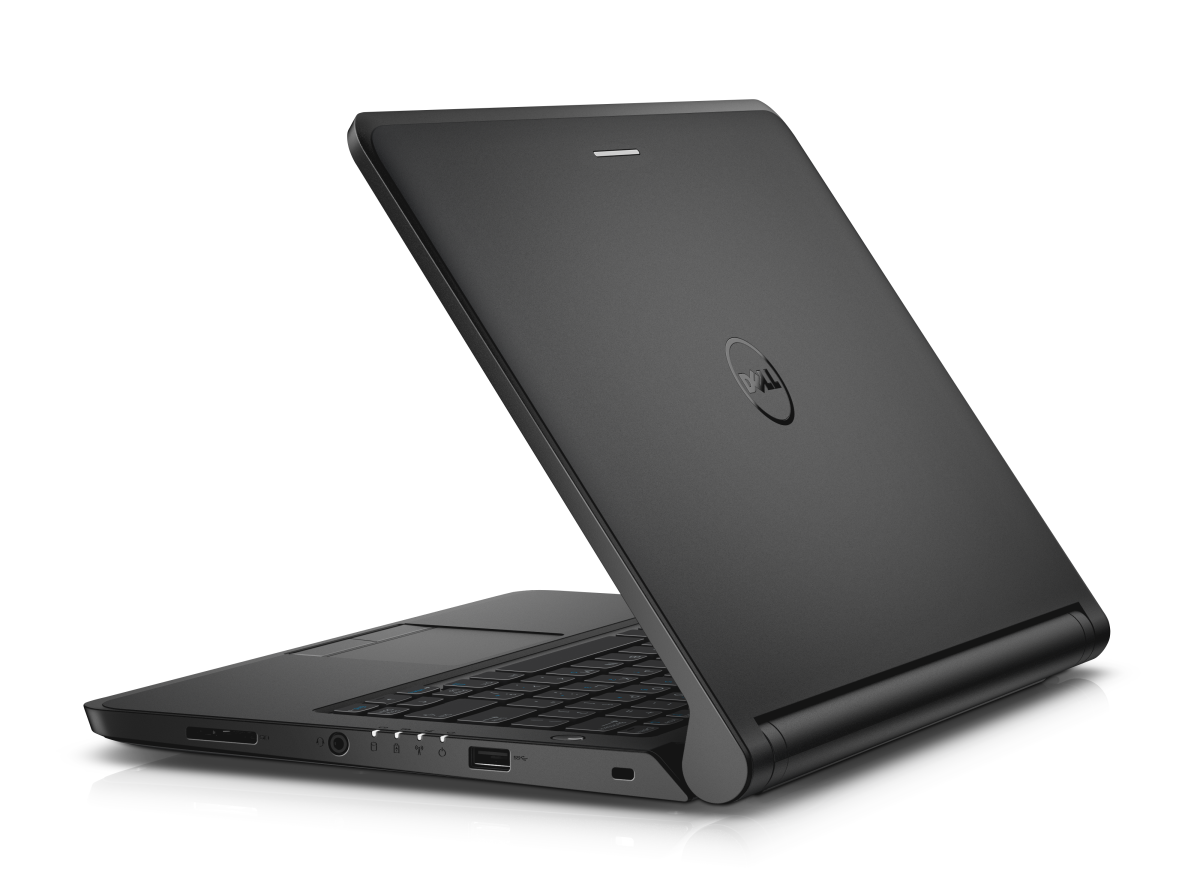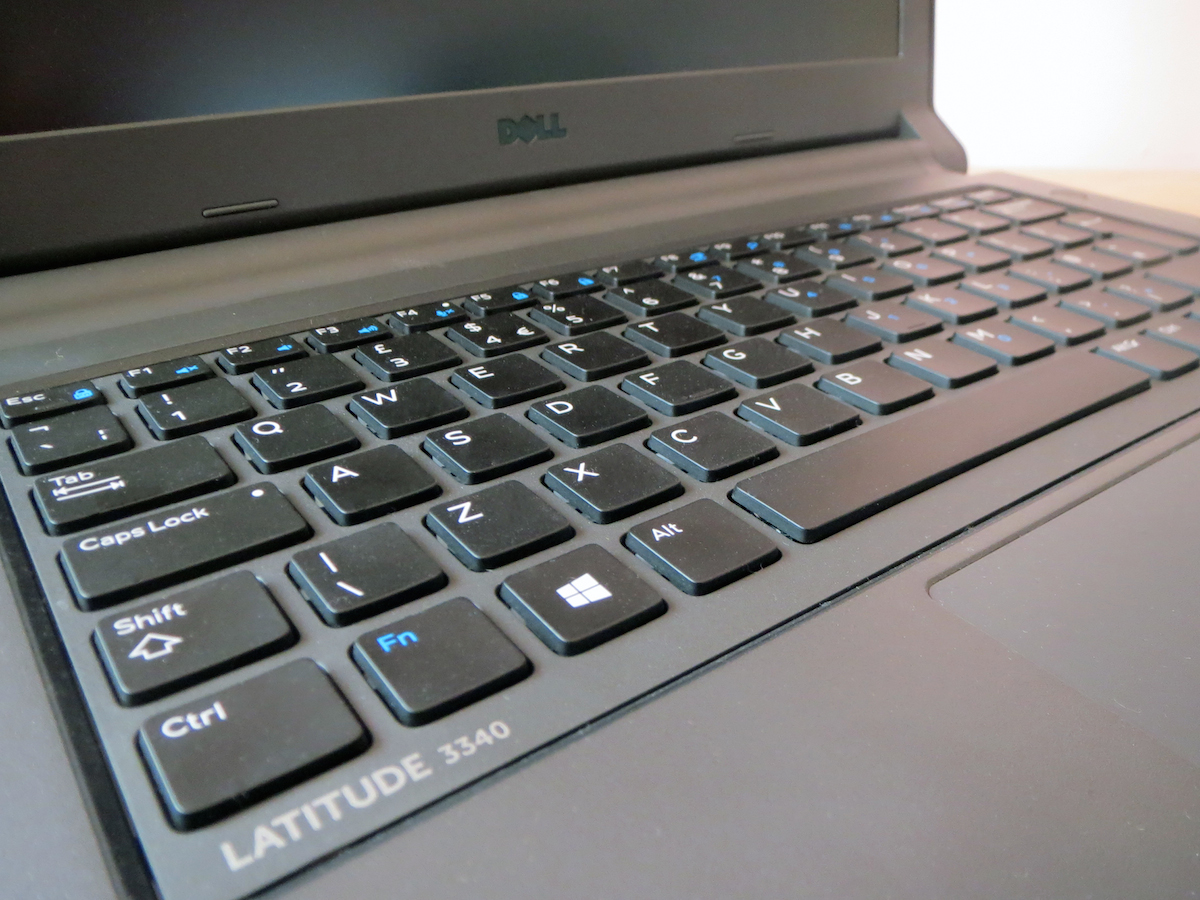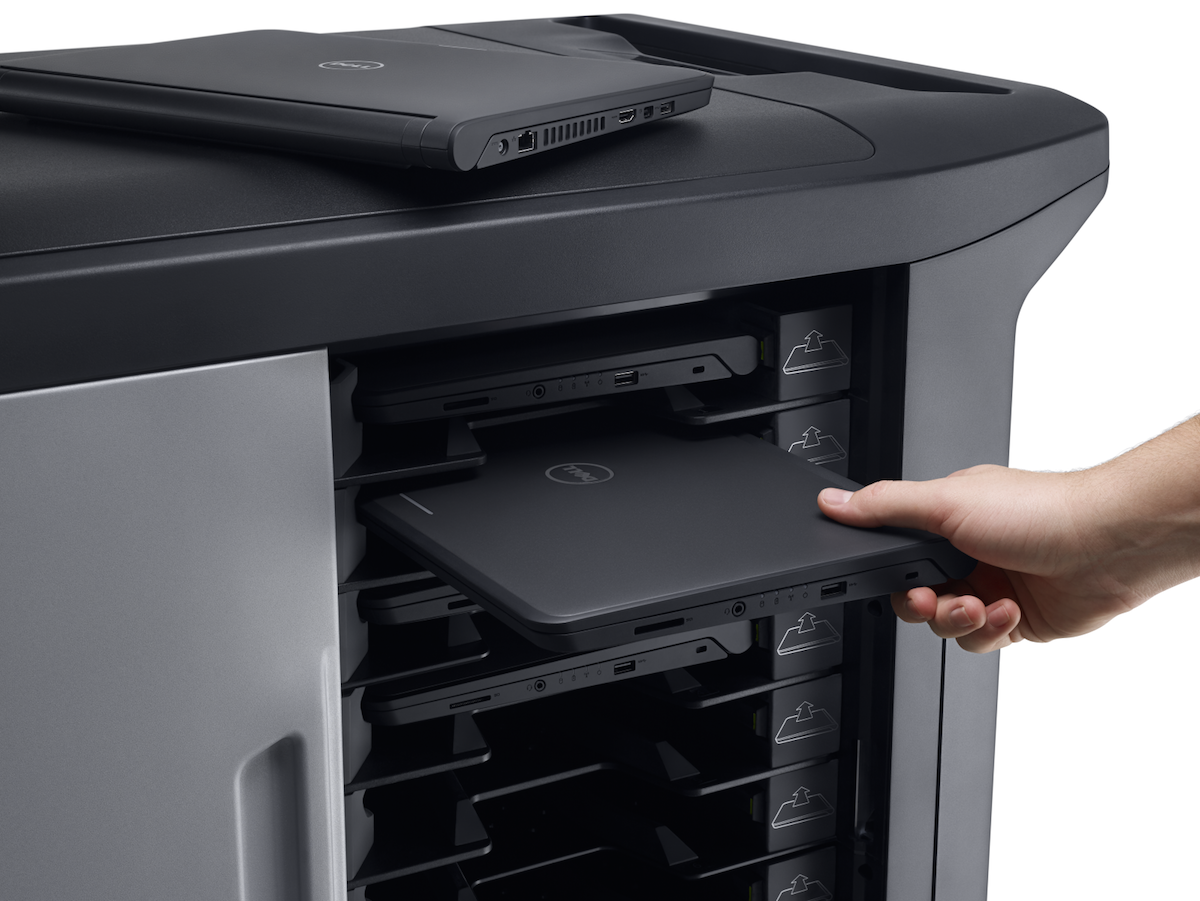Dell Latitude 13 Education Series review
With a Gorilla Glass screen, ruggedised chassis and a huge battery, the Latitude 13 is suitable for use in schools

Dell's strong, rubberised exterior, Gorilla Glass screen, superb keyboard and excellent battery life make this laptop ideal for the classroom.
-
+
Tough exterior; Excellent keyboard; Long-lasting battery; Strong performance; Versatile
-
-
Disappointing screen; Bulky design

Dell's Latitude 13 mixes a robust chassis together with plenty of ports and solid performance. But is it the perfect recipe for the education market?
In classrooms, build quality is crucial. Devices are expected to be bashed around on daily basis, and the Latitude 13 is designed to handle roughhousing.
Exert pressure on the wrist-rest, keyboard or base and the plastic won't budge. The screen is attached with two strong 180 hinges, and the Gorilla Glass panel is protected by a thick coat of plastic. Like all laptops if you press hard enough on the lid, there will be some screen distortion, but this is minor weakness.

The Latitude's plastic body is bolstered by grey rubber edges designed to absorb bumps. Dell has also included drainage on the keyboard and touchpad.
Connectivity is reasonable. There's are HDMI and mini-DisplayPort outputs, a Gigabit Ethernet socket, Kensington lock slot and an SD card reader. We'd like more than the 2 x USB 3 ports provided.
Dell's concentration on function over form has downsides. Its dark plastic and grey rubber mean it's chunky: 34mm thick and 1.9kg. Those dimensions mean the Latitude is bulkier than rivals: Dell's own Latitude 14 and the Asus P550CA are similarly weighty but 9mm thinner. The Latitude isn't much of a looker either.
Performance
Our review unit packed the high-end specifications. Powered by an ultra-low power Core i5-4200U processor clocked to 1.6GHz and with 4GB of RAM, the Latitude powered through to a score of 67/100 in our benchmarks.
This translated to good real-world performance with no problems running common apps like Microsoft Office, web browsers and media tools.
The low-power processor included the current generation Intel HD Graphics 4400 core. It's suitable for basic 3D apps, so students won't be playing Call of Duty on the sly.
The Latitude has a capacious 5,700mAh battery, so it's no surprise it's got class-leading longevity. In our standard video test the Latitude lasted a mighty 12 hours and 33 minutes. The stunning result is twice the longevity of the Dell Latitude 14, and a even beats the MacBook Pro 13in (10 hours 27 mins).
We loaded a benchmark that runs a word processor, spreadsheet tool, web browser and video calling application to simulate the Latitude's likely workload. In this test - and with Power Saver mode enabled - the Dell lasted for just over nine hours, enough for a full day in the classroom.
The processor didn't overheat, and the single fan was quiet, but we still weren't happy with the Latitude's thermal performance. Hot air is pumped from a vent on the left-hand edge, but the left-hand underside became heated after just a few minutes of stress-testing. It's fine on a desk, but it'll be uncomfortable on a lap.
Ergonomics
An education laptop needs a good keyboard, and Dell's Scrabble-tile unit doesn't disappoint. It's sunk into the base, which gives the keys more travel than we're used to finding on budget laptops.
Each button depresses with a satisfying snap, and they're solid and consistent enough to support rapid tapping. This is an excellent keyboard with the one annoying feature being the narrow Return key.

The large trackpad is responsive and supports gestures, and its two buttons click down easily. They're not as good as the keyboard, though - they feel plasticky and cheap.
Screen
The screen is strong, has a matte finish, and we like its 180 hinge. But this is where the good news ends. There's no support for touch, which is an issue on Windows 8 and the 1,366 x 768 resolution is dated.
The mediocre 230cd/m2 brightness is paired with a terrible 0.75cd/m2 black point, and yields a disappointing 306:1 contrast ratio. That means insipid black levels, vapid colours and a lack of distinction between different shades.
Those bad benchmark results are hampered by a poor Delta E of 10.27 and an sRGB coverage figure of just 63.1 per cent. Viewing angles aren't good either.
This screen passable for Office applications and web browsing. Attempt any high-end photography apps and graphics related software and it'll struggle.
Upgrades and service options
The 489 exc VAT model we've reviewed is the most expensive Education Series system. The next model down is around 100 cheaper, and its Core i3 processor has plenty of power for classroom tasks. There's a base model, too, although the 349 exc VAT version includes a Celeron processor - a weak chip only capable of basic tasks. That model also has single-band 802.11n Wi-Fi, while the others have dual-band 802.11ac.
Every model comes with a standard one-year deal, and this can be extended for as long as five years - prices scale up to 64. One to five year deals for ProSupport and Next Business Day on-site service are available and cost between 29 and 157. The service offering gets even more comprehensive, with accidental theft and damage protection, data protection, extended battery warranties and anti-theft tagging all available.
Accessories include backpacks, portable mice and external DVD writers, and tech-savvy IT departments can spend at least 1,500 on carts that charge and store multiple machines securely. You can also choose between Windows 7 and 8.1.

The BIOS is commendable. It's got dozens of options for tweaking the boot process and the Latitude's components - perfect for fine-tuning machines so they can't be abused by students. Many of these options can also be activated before shipping, which makes larger deployments easier.
Overall
The Dell works well for education: the strong, rubberised exterior make it tough, there's a Gorilla Glass screen, the keyboard is excellent and the battery life is class-leading. It's also got broad configuration options, which is important for this type of machine.
This Latitude isn't expensive, and that does mean downsides. The screen's low resolution and lack of quality means it's only capable of handling basic tasks, and the ruggedised chassis means it's heavy and thick.
We're willing to look past those negatives when the positives are so compelling. This is a great education laptop, and its strength, keyboard and battery life mean we'd also recommend it to others who need a work system that's tough and long-lasting.
Verdict
Dell's strong, rubberised exterior, Gorilla Glass screen, superb keyboard and excellent battery life make this laptop ideal for the classroom.
Processor: 1.6GHz Intel Core i5-4200U (2.6GHz Turbo Boost)
GPU: Intel HD Graphics 4400
Memory: 4GB DDR3
Storage: 500GB hybrid hard disks
Display: 13.3in 1,366 x 768 non-tough Gorilla Glass
Optical: N/A
Connectivity: Gigabit Ethernet, dual-band 802.11ac, Bluetooth 4.0
Ports: 2 x USB 3, HDMI, mini-DisplayPort, 1 x audio jack, SD card slot, Kensington lock slot
Dimensions: 330 x 243 x 34mm (WxDxH)
Weight: 1.9kg
Get the ITPro daily newsletter
Sign up today and you will receive a free copy of our Future Focus 2025 report - the leading guidance on AI, cybersecurity and other IT challenges as per 700+ senior executives
Mike Jennings has worked as a technology journalist for more than a decade and has been fascinated by computers since childhood, when he spent far too long building terrible websites. He loves desktop PCs, components, laptops and anything to do with the latest hardware.
Mike worked as a staff writer at PC Pro magazine in London for seven years, and during that time wrote for a variety of other tech titles, including Custom PC, Micro Mart and Computer Shopper. Since 2013, he’s been a freelance tech writer, and writes regularly for titles like Wired, TechRadar, Stuff, TechSpot, IT Pro, TrustedReviews and TechAdvisor. He still loves tech and covers everything from the latest business hardware and software to high-end gaming gear, and you’ll find him on plenty of sites writing reviews, features and guides on a vast range of topics.
You can email Mike at mike@mike-jennings.net, or find him on Twitter at @mikejjennings
-
 ‘Phishing kits are a force multiplier': Cheap cyber crime kits can be bought on the dark web for less than $25 – and experts warn it’s lowering the barrier of entry for amateur hackers
‘Phishing kits are a force multiplier': Cheap cyber crime kits can be bought on the dark web for less than $25 – and experts warn it’s lowering the barrier of entry for amateur hackersNews Research from NordVPN shows phishing kits are now widely available on the dark web and via messaging apps like Telegram, and are often selling for less than $25.
By Emma Woollacott Published
-
 Redis unveils new tools for developers working on AI applications
Redis unveils new tools for developers working on AI applicationsNews Redis has announced new tools aimed at making it easier for AI developers to build applications and optimize large language model (LLM) outputs.
By Ross Kelly Published
-
 Google layoffs continue with "hundreds" cut from Chrome, Android, and Pixel teams
Google layoffs continue with "hundreds" cut from Chrome, Android, and Pixel teamsNews The tech giant's efficiency drive enters a third year with devices teams the latest target
By Bobby Hellard Published